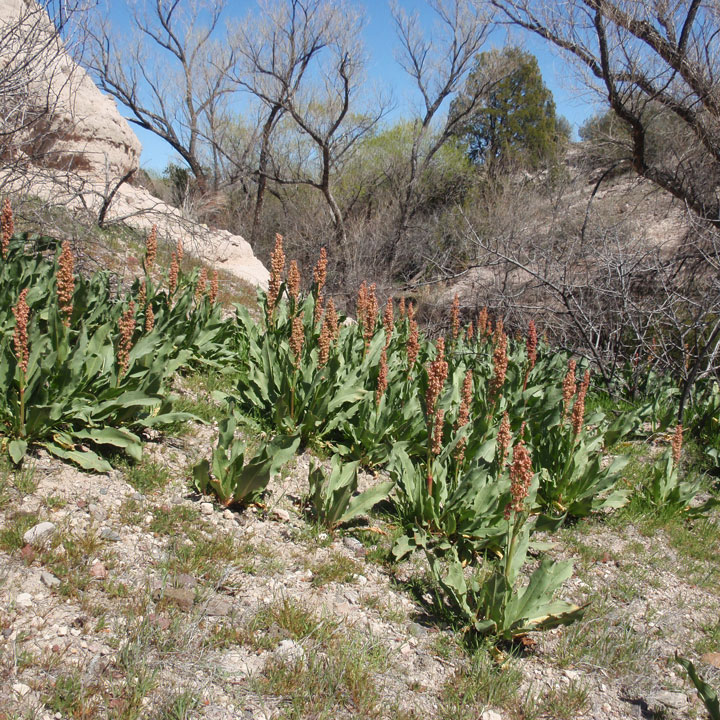Rumex
|
Family: Polygonaceae |
Herbs, perennial, biennial, or annual, synoecious (subg. Rumex and Platypodium) or dioecious (subg. Acetosa and Acetosella), occasionally polygamomonoecious, with taproots and usually short caudex, or sometimes rhizomatous and/or stoloniferous. Stems erect, ascending, or prostrate, glabrous or papillose-pubescent. Leaves basal (in some species) and cauline, alternate, petiolate; ocrea persistent or partially deciduous, membranous; petioles present on basal and proximal cauline leaves, absent on distal cauline leaves, bases not articulated; blades variable in shape, basal (if present) and proximal cauline leaves from broadly ovate or almost orbiculate to linear, becoming progressively smaller and narrower distally, margins entire (or basally lobate), flat, or occasionally undulate or crisped. Inflorescences terminal, sometimes terminal and axillary, paniclelike, rarely simple. Pedicels present. Flowers bisexual or unisexual, (1-)4-30 per ocreate fascicle, base stipelike; perianth green, pinkish, or red, campanulate, glabrous; tepals (5-)6, connate proximally, sepaloid, dimorphic, outer 3 remaining small, inner 3 usually enlarging, sometimes 1-3 with central vein transformed into tuberculate callosity (tubercle); stamens 6; filaments distinct, free, glabrous; anthers, yellow to brownish yellow, ovate to elongate; styles 3, spreading or reflexed, distinct; stigmas 3, fimbriate or plumose. Achenes included in accrescent and usually veiny perianth, tan to dark brown, unwinged to weakly winged, 3-gonous, sometimes compressed-3-gonous or nearly pyramidal, glabrous. Seeds: embryo straight. x = 7, 8, 9, 10 (polyploidy widespread in the genus). Fls perfect or unisexual; tep 3 ±3, the outer usually narrower at anthesis; stamens 6, on short filaments; ovary trigonous; styles 3, spreading or deflexed over the angles of the ovary, each with a branched, stellate stigma; achene trigonous, closely invested by the accrescent inner tep; our spp. herbs, usually coarse; lvs subtended by sheathing stipules; fls small, greenish or suffused with red, in small verticils aggregated into a compound infl. At maturity the inner tep are called valves; often the midrib of a valve enlarges into an evident protuberance called a grain or tubercle. Our spp. all fl in summer and fr in late summer and fall. 200, widespread. Gleason, Henry A. & Cronquist, Arthur J. 1991. Manual of vascular plants of northeastern United States and adjacent Canada. lxxv + 910 pp. ©The New York Botanical Garden. All rights reserved. Used by permission. |

